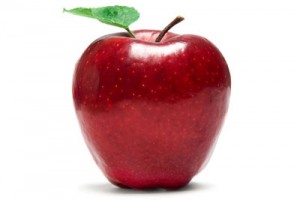
Good Things Come to Those Who Workout
SWEAT…It Does a Body...
Read More
SWEAT…It Does a Body...
Read More
Most people hear the word genetically modified and think what’s the big deal? Isn’t that just a fancy term for describing the manipulation of plant DNA to make a new version? Genetically modified does mean that scientists controlled the pollination of certain plants to create new hybrids. Hopefully to create a better versions of some foods, i.e. sweeter tomatoes, more hardy plants, etc. The acronym GMO stands for Genetically Modified Organism. This is different. Instead of just manipulating plant DNA, scientist inserted virus and bacteria DNA into the plant DNA. According to federal regulations, this alters the new plant so significantly that it is reclassified as an animal and not plant form. How safe it is to eat these foods remains unclear. A 2013 review of 1,763 GMO studies found no clear evidence of toxic or harmful effects. But other studies have shown a transferring of the DNA from GMO foods with human DNA in the gut. The long term consequences are unknown at this time. Sixty-one countries, including most of Europe require food to be labeled for GMO content. The United States and Canada do not. You may think that you don’t eat GMO foods, but you would be wrong. Sixty to eighty percent of packaged foods in your supermarket contain ingredients derived from genetically modified crops. Even eighty percent of foods labeled “natural” were shown to contain at least one GMO ingedient by one study. The three largest crops that have been genetically modified with virus/bacteria DNA include soybean (oil), beet (sugar), and corn. If you want to avoid GMO until there is a better understanding of the long-term health consequences buy certified organic as these foods are regulated to not contain...
Read More
Focus on what’s most important to you. Taking on too much can wear you out. Learn to say “no” and let go of things that do not matter. Set one small goal at a time. Use a day planner. Break large projects into smaller ones. Ask for help. Let your children, spouse, coworkers, and others help you get things done. Leave your job at the office. Don’t give up free time to get more work done. If your job offers a flexible work schedule, use it to fit your own work style. Unplug. Do not let technology rule your life. Turn off the electronics, soak in the beauty of nature, and spend time with people you enjoy. Peace is not absence of conflict, it is the ability to handle conflict by peaceful means. Ronald...
Read More
2014 Shopper’s Guide to Pesticides in Produce Two-thirds of produce samples in recent government tests had pesticide residues. Don’t want to eat bug- and weed-killers? Check out EWG’s Shopper’s Guide to Pesticides in Produce . It is worth your health to purchase organic when possible, particularly for children and teens. The following list is the fruits and vegetables that test the highest for pesticide residues. If you see a food you regularly eat on this list, choose the organic version instead. Remember – the health benefits of a diet rich in fruits and vegetables outweigh risks of pesticide exposure. Dirty Dozen Plus™ APPLES , STRAWBERRIES, GRAPES, CELERY, PEACHES, SPINACH, SWEET BELL PEPPERS, NECTARINES – IMPORTED, CUCUMBERS, CHERRY TOMATOES, SNAP PEAS – IMPORTED, POTATOES, HOT PEPPERS, KALE/COLLARD GREENS, AVOCADOS, SWEET CORN, PINEAPPLES, CABBAGE, SWEET PEAS-FROZEN, ONIONS, ASPARAGUS, MANGOES, PAPAYAS, KIWI, EGGPLANT, GRAPEFRUIT, CANTALOUPE, CAULIFLOWER, SWEET...
Read More
Fill your cart with healthy options! When you make healthy choices at the grocery store, it’s easier to keep making them every day at home. Arm yourself with these smart shopping tricks to avoid supermarket temptations. Before you go Plan your meals first. List what you will eat and drink for each meal over the next week. If you are using recipes, check to see which ingredients you have already and what you need to buy. Don’t forget breakfast. Healthy breakfast foods — like eggs, whole-wheat toast, whole-grain cereal, low-fat granola, and low- or nonfat yogurt — can help manage your weight. Look for breakfast foods without added sugars on the label. Stock up on sides and snacks. Smart snacks like nuts, pretzels, and sliced fruit are quick and easy. And don’t forget lots of vegetables that you can snack on raw, or steam, roast, or stir-fry. Whole grains, such as brown rice, bulgur, and quinoa also make deliciously healthy sides. Organize your list by food type. Organizing your grocery list by food types not only makes it easier to shop efficiently, it also makes it easier to skip the junk food aisles. For example, you could organize your list like this: fresh fruits and vegetables breads and whole grains canned goods frozen foods meat, fish, and poultry dairy and eggs What’s in store? Avoid the bakery section. To boost sales, stores make sure shoppers can smell the cakes and cookies in their bakery section. They may be fresh, but they’re full of sugar, fat, and empty calories. Head for the pre-packaged whole-grain breads instead. Don’t shop hungry. If your stomach is growling, you are more likely to buy unhealthy foods (and too much of them). Shop after a meal, or eat a small healthy snack before you go. Look high and low. Tempting items are often placed at eye level on the supermarket shelves. Check out the items higher and lower on the shelves, which can be better choices and less expensive, too. Stick to the edges. Try to shop around the outside aisles of the grocery store, where the fresh produce, dairy, and meat are usually found. Go down the other aisles only if you need a...
Read More